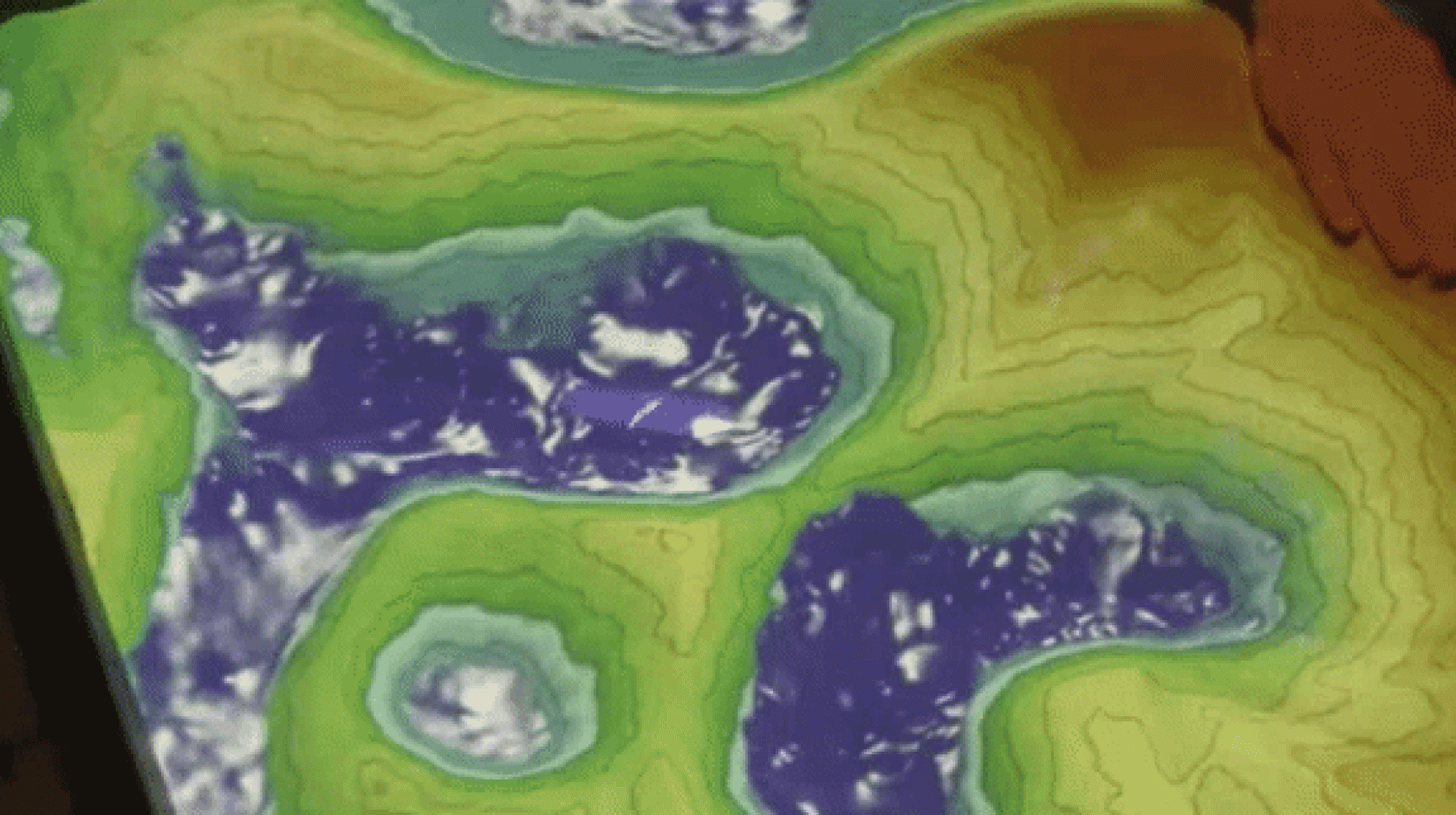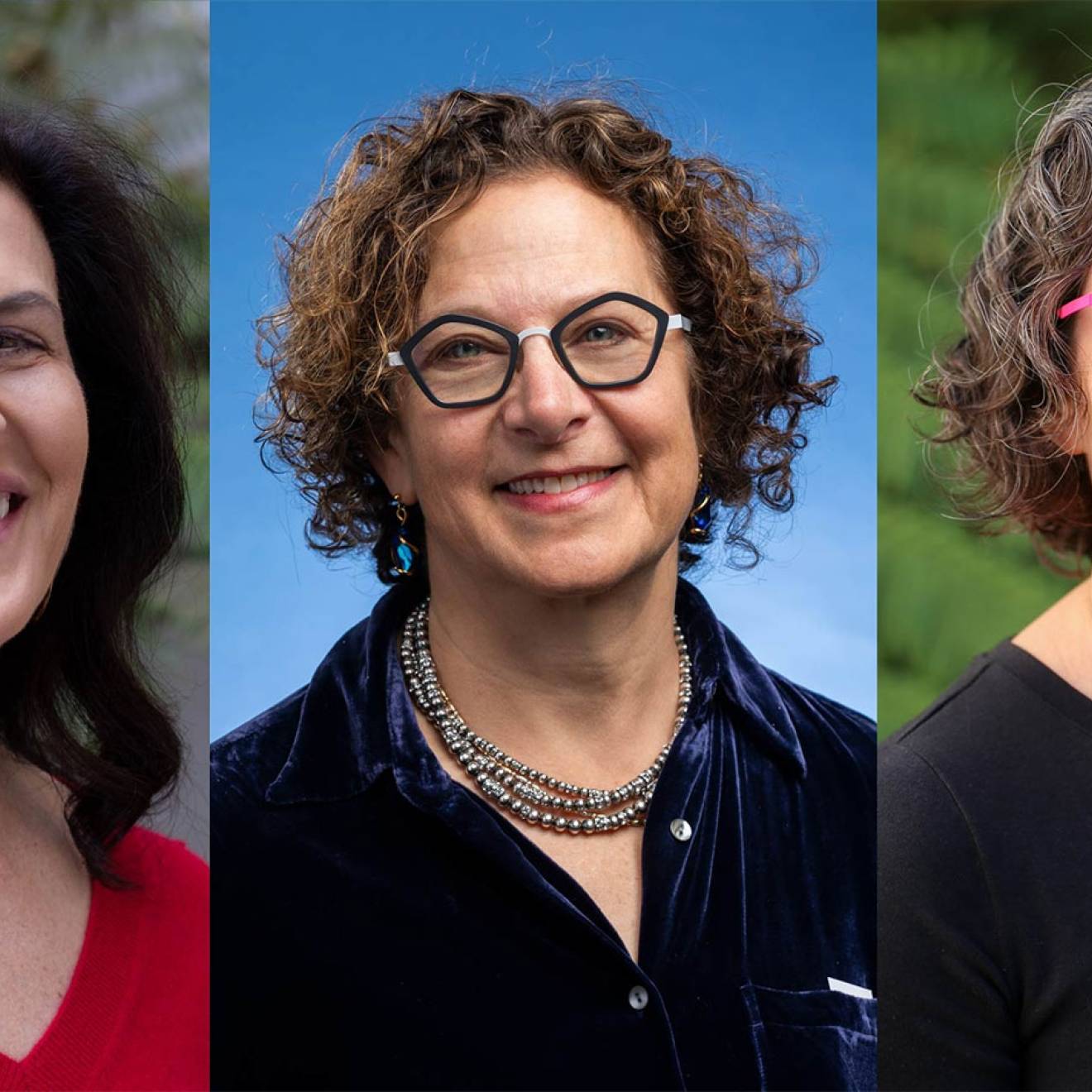Andy Murdock, UC Newsroom

Visitors to Capitol Hill this week might have seen what appeared to be legislators playing with a sandbox. Granted, it was no normal sandbox: it was an augmented reality sandbox, an innovative teaching tool presented by a team from UC Davis as part of the 22nd annual Coalition for National Science Funding Capitol Hill Exhibition.
You can’t blame anyone for rolling up their sleeves and digging in – the sandbox was designed to be played with – but it’s much more than just a toy.
“The Augmented Reality Sandbox is a sandbox, like any kid is used to,” explained Geoff Schladow, professor of civil and environmental engineering and director of the Tahoe Environmental Research Center. “But as you shape the sand, suddenly colors and contour lines show up on the sand like on a topographic map. And if you put your hand just above the sand, it becomes a cloud and rain appears to fall onto the landscape, and you can watch the water flow through the topography.”

Inspired by a YouTube video that showed how a Microsoft Kinect motion sensor could be combined with a sandbox, Schladow and colleagues built on the idea and incorporated it into a project to develop 3-D visualizations for teaching and inspiring stewardship of freshwater ecosystems, funded by a grant from the NSF Advancing Informal STEM Learning program.
“It’s incredibly simple and intuitive. And it’s quantitative and immersive – you’re playing with landscapes in real time,” said Schladow.
The UC Davis team has installed three augmented reality sandboxes at museums (at the Tahoe Science Center at Lake Tahoe, the Lawrence Hall of Science in Berkeley, and the ECHO Leahy Center in Burlington, Vermont), but Schladow knows of over 120 others around the world, set up using the software that the team made freely available.
More than just a pretty sandbox
Beyond its use as a teaching device, the sandbox has real research applications, allowing scientists to study the effects of climate change including drought and extreme flooding.
“You can put a 500-year storm into a watershed and watch the effects,” said Schladow.

Other installations of the technology around the world have adapted it to purposes never envisioned by the creators, including the Marine Corps which is using a sandbox for tactical training.
“At the USA Science and Engineering Festival, people came back to tell us that it was the coolest thing they had seen, and we were competing with Lockheed fighter jets,” said Schladow.
Next, Schladow and his colleagues are hoping to transition the technology from the informal settings of museums to the classroom.
“This project was only possible because of the interdisciplinary group that it brought together: engineers, geophysicists, library science, biology,” said Schladow. “This couldn’t have been done by one of us alone.”
NSF and UC research
“The National Science Foundation’s partnership with the University of California is instrumental to UC’s research enterprise,” said associate vice president of Federal Governmental Relations Gary Falle.
The CNSF Capitol Hill Exhibition is an annual opportunity to show lawmakers some NSF funding results up close. In addition to the UC Davis team, five other UC universities exhibited projects. A team from UC Irvine demonstrated a novel way to improve precipitation estimates in an increasingly variable climate. UC Berkeley’s team showed off new technology developed by grad students for mercury contamination monitoring based on UC Berkeley and Lawrence Berkeley National Laboratory research, now being commercialized with the help of entrepreneurship training made possible by the NSF Innovation Corps Program. Teams from UC Santa Barbara and UCLA exhibited their research on the nation’s energy and water infrastructure, while a team from UC Riverside showed how analyses of Earth chemistry can inform our search for life on other planets.
“All ten of the UC campuses receive NSF funding, and those funds account for the second-largest source of research support to the University,” said Falle.
In 2015, UC was awarded $509 million in NSF funding on more than 2,100 grants, more than half the total for all California institutions put together.
“This funding allows UC to conduct research in key areas including biology, earth sciences, engineering, computing and science education,” said Falle.

